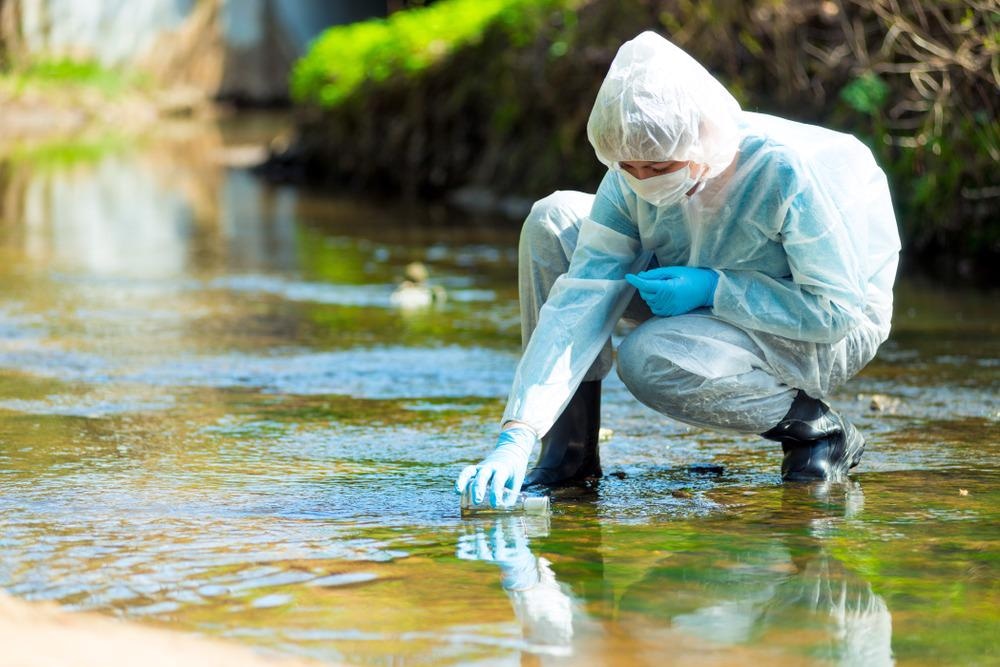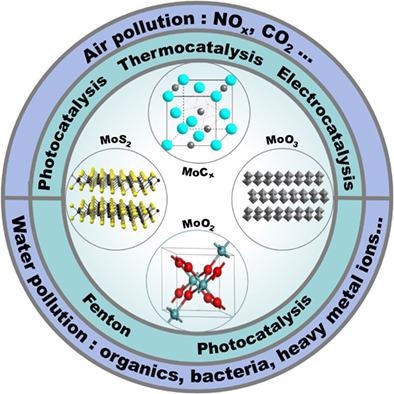The applications of molybdenum (Mo)-based materials have garnered significant interest due to their abundant electronic properties and their potential applications in the control of environmental pollutants.

Study: Molybdenum-based heterogeneous catalysts for the control of environmental pollutants. Image Credit: kosmos111/Shutterstock.com
A recent review in the EcoMat journal aimed to highlight and summarize a range of new developments in the use of Mo-based materials to better control water and air pollutants while exploring a range of methods with the potential to optimize Mo-based materials for use in high-efficiency catalysts.
Air and water pollution remain among the most pressing global issues, putting vital ecosystems, food chains, and the environment necessary for human life in jeopardy.
Water pollutions tend to stem from heavy metal ions, refractory organic pollutants, and bacteria—toxic, harmful pollutants from industrial and wastewater processes which do not decompose naturally. This issue is compounded by the eutrophication of bodies of water which can result in favorable conditions for large numbers of bacteria to reproduce, further polluting and adversely affecting water quality.
Air pollution is primarily comprised of volatile organic compounds (VOCs), nitrogen oxides (NOx), sulfur oxides (SOx), and carbon dioxide (CO2) – pollutants that primarily stem from the burning of fossil fuels. The impact of CO2 as a greenhouse gas has been widely documented, with significant amounts of CO2 substantially impacting the Earth’s climate.

Image Credit: Ji, J, Bao et al., EcoMat
A range of technologies and approaches has been developed in order to respond to these issues, including activated carbon adsorption, ultrafiltration, and advanced oxidation processes (AOPs) aiming to tackle water pollution issues; and thermal catalysis, photocatalysis, and electrocatalysis which see regular use in the ongoing struggle against air pollution.
Catalysts are central to many of these methods and technologies, with molybdenum (Mo)-based catalysts such as molybdenum disulfide (MoS2), molybdenum dioxide (MoO2), molybdenum trioxide (MoO3), molybdenum carbide (MoCx), and molybdenum powder seeing extensive use over the past several decades.
Mo-based materials offer excellent potential for use in the control of water pollution, seeing routine use in AOPs as advanced catalysts and cocatalysts. These are also key to many Fenton or Fenton-like reactions, where the distinct properties of materials including MoS2, MoO2, and molybdenum powder are used to support processes such as pollutant degradation, sterilization, and the reduction of heavy metal ions.
Most notably, Mo-based catalysts offer a promising means of addressing the risks posed by metallurgical wastewater, which typically includes high numbers of extremely poisonous high-valence metal ions. These ions cause significant harm to human health and can decimate local ecosystems, requiring the development and implementation of robust, reliable, and efficient catalysts that can effectively remove heavy metal ions.
Mo-based catalysts offer a potential solution to this pollution, supporting and enabling reactions and processes such as physical adsorption, chemical redox reaction, and photocatalytic reactions able to remove heavy metals and render these harmless.
Mo-based catalysts have seen extensive use in supporting the development of NOx reduction with ammonia, as well as CO2 conversion through the application of thermocatalysis, photocatalysis, and electrocatalysis.
MoO3 is also central to the promotion and stabilization of the industrial NH3-SCR catalyst V2O5-MoO3(WO3)/TiO2, and while there have been a number of advances in the use of Mo-based molecular sieves, empowered be Mo’s hypotoxicity, minimal cost, and large specific surface area.
The reduction of carbon dioxide production is essential to addressing air pollution, and Mo-based catalysts have offered excellent potential in a range of CO2 conversion technologies.
For example, MoS2 can be employed in CO2 electrochemical reduction and photoreduction, while MoCx offers good potential for use in CO2 hydrogeneration and the conversion of CO2 to useful fuel products.
The primary disadvantages of many Mo-based materials stem from limitations surrounding costs and capacity, meaning that many of these highly beneficial materials can only be applied to small-scale or laboratory-based applications.
In order to fully realize their potential to help address air and water pollution on a global scale, there is a need to mature these systems into viable industrial-scale applications. The scaling up and optimization of these catalysts will be key to enabling their widespread use.
As technology advances and their application becomes more integrated into common industrial processes, the highly beneficial and promising properties of Mo-based catalysts are prompting increasing amounts of research into their use in the control of a number of environmental pollutants; research that can only result in their further, more widespread adoption.
Disclaimer: The views expressed here are those of the author expressed in their private capacity and do not necessarily represent the views of AZoM.com Limited T/A AZoNetwork the owner and operator of this website. This disclaimer forms part of the Terms and conditions of use of this website.
Source:
Ji, J, Bao, Y, Liu, X, Zhang, J, Xing, M. Molybdenum-based heterogeneous catalysts for the control of environmental pollutants. EcoMat. 2021;e12155. doi:10.1002/eom2.12155 https://onlinelibrary.wiley.com/doi/full/10.1002/eom2.12155